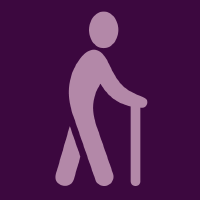Topic Menu
► Topic MenuTopic Editors




One Health Approach in Global Health and Clinical Medicine
Topic Information
Dear Colleagues,
It is increasingly clear that resolving complex global health and medical problems requires interdisciplinary, intersectoral expertise and cooperation from governmental, non-governmental, and educational agencies. ‘One Health’ refers to the collaboration of multiple disciplines and sectors working locally, nationally, and globally to attain optimal health for people, animals, and the environment. The One Health approach supports global health security and clinical medicine by improving coordination, collaboration, and communication at the human–animal–environment interface to address shared health threats such as zoonotic diseases, antimicrobial resistance, food safety, and others. The current fragmented framework of health governance for humans, animals, and the environment, together with the conventional linear approach to solving current health problems, is failing to meet today’s health challenges and is proving unsustainable. Furthermore, the evidence base demonstrating One Health’s possible applications, impact in clinical practice, and human health benefits is largely missing. In addition, its implementation in practice remains limited, primarily due to a lack of financial support and the secular anthropogenic and self-centered mentality. In this Special Issue, we welcome submissions of original research, clinical trials, meta-analyses, and systematic reviews addressing the following domains, but not limited to:
- Wellbeing of humans, animals, and ecosystems;
- Disease surveillance, prevention, and the response of chronic and infectious diseases;
- Global challenges in public health;
- Zoonoses and neglected tropical diseases;
- Health system preparedness for pandemic prevention;
- Promoting human–animal–environment wellbeing;
- Sustainability strategies and the relationship among healthcare systems;
- Key role of vaccines in One Health;
- Antimicrobial resistance;
- Environmental health;
- One health and clinical medicine;
- Public policy and regulation;
- Globalizing One Health leadership;
- Decolonizing One Health.
Dr. Roy Rillera Marzo
Prof. Dr. Adnan Kisa
Dr. Atin Adhikari
Dr. Bijaya Padhi
Topic Editors
Keywords
- one health
- antimicrobial resistance
- human–animal–environment wellbeing
- healthcare systems
- clinical medicine
- environmental health
Participating Journals
| Journal Name | Impact Factor | CiteScore | Launched Year | First Decision (median) | APC |
|---|---|---|---|---|---|

Geriatrics
|
2.1 | 3.3 | 2016 | 27.4 Days | CHF 1800 |

Healthcare
|
2.4 | 3.5 | 2013 | 20.5 Days | CHF 2700 |

International Journal of Environmental Research and Public Health
|
- | 7.3 | 2004 | 24.3 Days | CHF 2500 |

Journal of Clinical Medicine
|
3.0 | 5.7 | 2012 | 17.3 Days | CHF 2600 |

Tropical Medicine and Infectious Disease
|
2.8 | 3.9 | 2016 | 20.9 Days | CHF 2700 |

MDPI Topics is cooperating with Preprints.org and has built a direct connection between MDPI journals and Preprints.org. Authors are encouraged to enjoy the benefits by posting a preprint at Preprints.org prior to publication:
- Immediately share your ideas ahead of publication and establish your research priority;
- Protect your idea from being stolen with this time-stamped preprint article;
- Enhance the exposure and impact of your research;
- Receive feedback from your peers in advance;
- Have it indexed in Web of Science (Preprint Citation Index), Google Scholar, Crossref, SHARE, PrePubMed, Scilit and Europe PMC.

